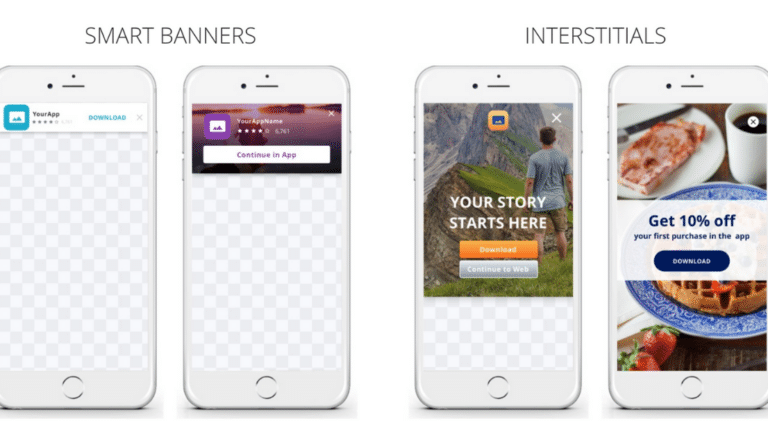There are 2.1M apps in the Google Play store and 2M apps in the iOS App Store as of Q3 2018, according to Statista. However, app adoption and monetization are heavily skewed toward the top few apps of each vertical – creating an app store power law that is nowhere near 80/20.
Branch co-founder and CEO Alex Austin has developed a term for this which he calls the App Store 99/.01 rule. Austin explains, “The structure and layout of the App Store favors the discovered. The top charts are the biggest driver of the power law, as they are self-reinforcing.”
So how can your app stand out in this fiercely competitive environment? And how can deep linking help optimize your user acquisition efforts, specifically for cross-platform users?
Let’s take a look at four deep linking strategies that can supercharge your acquisition efforts. Since paid and organic channels are instrumental in driving cross-platform user acquisition, this post will examine both.
1. Convert Mobile Web Users to App Users
Converting your existing mobile web traffic into app users is an effective and efficient way to jumpstart your cross-platform user acquisition efforts. A primary reason is that capturing a user with a web ad costs on average 20% as much as driving an install. With prices like this, most of today’s top mobile brands have developed cross-channel strategies to drive users from the mobile web into their app.
One of the best strategies for driving web-to-app conversions: targeted interstitial or smart banners that take mobile web users to the app if they have it installed, or to their designated app store where they’ll be prompted to download the app.
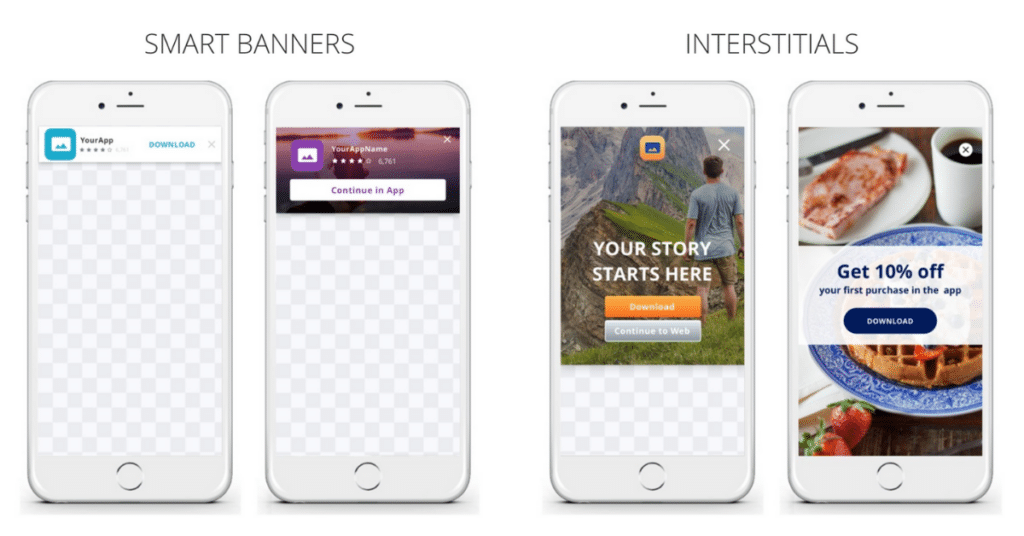
Leveraging deep links in these interstitials and banners can drive even more installs, since deep links preserve the context of user intent from mobile web through install and conversion.
Example: Across the bottom of all its mobile web pages, Boxed shows new users a standard sticky banner with a call to action to install the app.
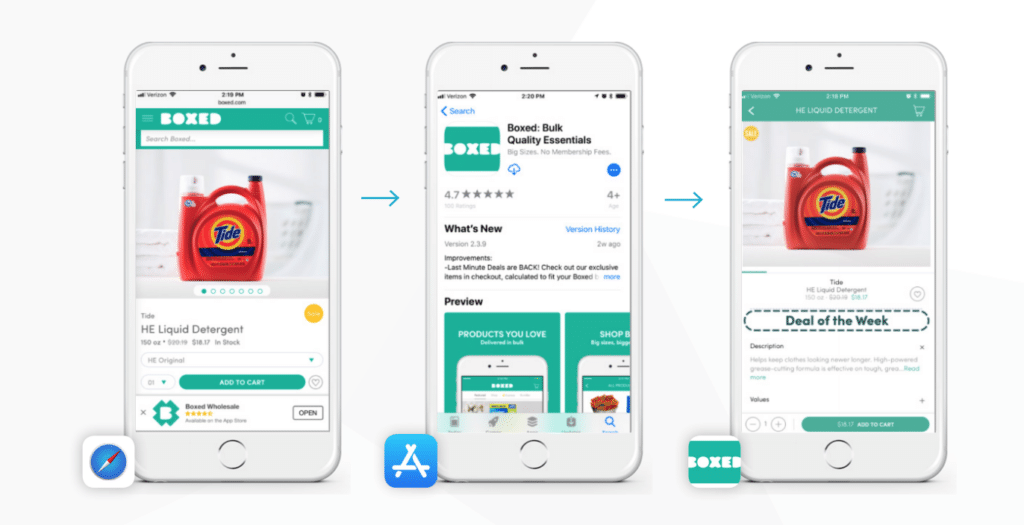
In this example, a mobile user shopping for laundry detergent lands on the Boxed mobile website. The user then taps the app install banner, installs the app, and is deep-linked directly to the same product they were viewing on the mobile web. The onboarding process is seamless and contextual, and the high-intent mobile web user is now on a platform where users historically convert at a 300% higher rate.
Through deep linking, Boxed has significantly improved their app performance and has seen ROI in the form of 90% higher conversion rates in-app compared to mobile web. This has led to a 54% increase in mobile revenue.
2. Acquire App Users Through Paid Ads
Deep-linked ads are a great way to acquire users and nail your first impression with those users. By leveraging deep links in your paid ad campaigns, you can take your newly acquired user directly to a specific product, automatically apply a discount code, or give a customized onboarding experience.
Example: Postmates serves users a customized view in the app when they enter from a paid campaign.
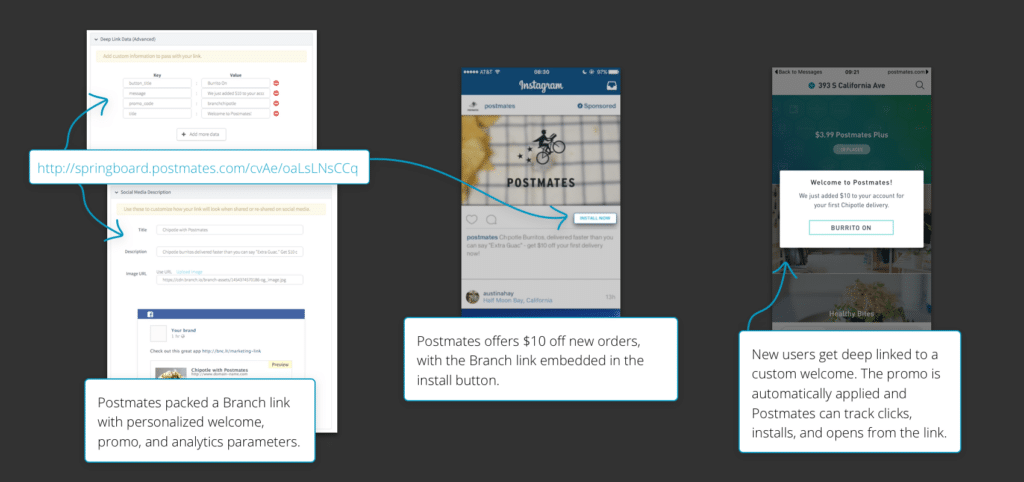
Postmates wanted to ensure it could deep link and drive contextual installs from Instagram ads. When a user clicks through the Instagram ad to install the Postmates app, they see the customized welcome message and the $10 promotion is automatically applied.
Deep linking paid ads not only allow Postmates to customize the app onboarding experience and reduce steps to conversion, but also provide the team with granular tracking data to assess – and improve – cross-platform campaign performance. Through this particular install ad campaign, Postmates achieved a 31% click-to-install rate. An impressive result considering the industry average is typically below 10% for most channels.
3. Leverage Organic Social Media
In the U.S., 70% of social media consumption occurs on mobile. By incorporating deep links into organic social strategies, Branch customers have doubled their retention rates. As cross-platform users spend 2.2X more money than their single-platform counterparts, optimizing the experience of cross-platform users also has a positive impact on ROI.
Now, let’s take a look at some examples of how deep linking on organic social channels can positively impact cross-platform user acquisition.
How to Deep Link Out of Major Social Platforms – Facebook, Instagram, WeChat
Social platforms such as Facebook, Instagram, and WeChat have created “walled gardens” to keep users inside their apps. They have in-app browsers that prevent users from leaving their apps and prevent brands from deep linking users directly into their mobile apps.
Luckily, there are two paths out of these walled gardens. The first path uses Branch quick links in your social posts. A quick link is a Branch feature that allows you to create deep links into your app that work on all devices and channels.
Example: Airbnb posted a deep link on their Facebook page as a Book Now button to direct users to in-app content

The other method for deep linking out of major platforms is to send users to your mobile website (within the in-app browser) where you can then prompt users to download your app using smart banners.
Example: Under Armour initially takes visitors to their mobile website within the in-app browser, but once the user clicks the banner they are taken out of the Facebook app to the App Store. From there, they can download and open the Under Armour app for a higher quality user experience than mobile web.
Bottom line: Social media is undeniably a great channel for acquiring users, as it’s already being used heavily by consumers to discover new apps and content. By deep linking your social media content and ads on mobile, you can increase the number of organic app installs – maximizing the return on your cross-platform user acquisition efforts.
4. Tap Into Organic Search
With consumers spending more than 90% of their mobile internet time inside of apps, Google and Apple are working to make mobile apps more search-friendly. Both have released new app indexing methods for mobile developers with the goal of showing consumers search results for in-app content.
As Apple and Google compete to become the leader in app discovery, apps have more and more opportunities to surface their in-app content to high-quality users at the exact moment they need it.
Google’s Firebase App Indexing
App Indexing is how you get your app into Google Search. To do this, mark up your website with meta tags that correspond to your app content. Then, when Google crawls your web content, the search engine knows where that content exists in your app as well. You can find detailed implementation steps here.
Google’s app discovery engine is, at the time of this post, heavily influenced by web. This is great if you have a strong web presence and SEO strategy – but if you only have an app (especially an iOS app), this is bad news. Since Google doesn’t yet have a generally available option to index app-only content, your content will not be surfaced to Google search users.
If you have an app but no website, we recommend using Deepviews, which allow you to easily generate web-hosted previews of in-app content so it can be visible to Google web crawlers.
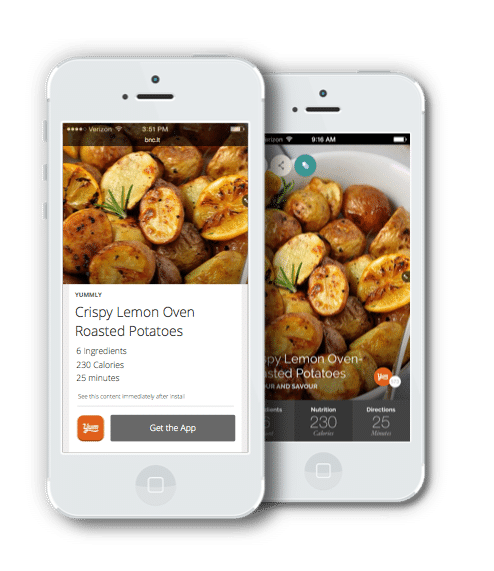
Apple Spotlight Search
Spotlight Search is Apple’s app discovery engine. Apple indexes app content you identify form them using their Core Spotlight Framework. Apple then surfaces your content to users in Spotlight Search (the search bar that appears on the top of your iPhone when you swipe down from your home screen, or all the way left). Spotlight Search comes in two flavors:
- Spotlight Local: Scans content on a user’s phone and returns relevant content in apps that are already installed.
- Spotlight Cloud: Theoretically scans any app content listed by developers, regardless of whether the app is installed on the phone.
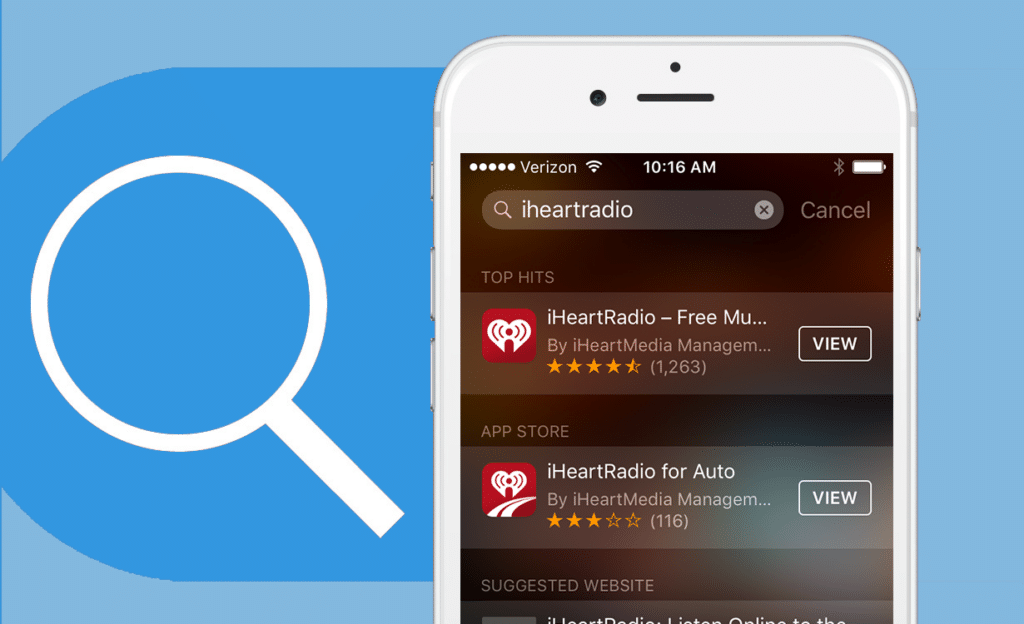
As these technologies are fairly new and continue to evolve, staying up-to-date with the latest developments can be challenging. Consider leveraging deep linking partners like Branch to ensure the continued success of your cross-platform discoverability and user acquisition efforts.
We released the Branch Universal Object, our mechanism for creating deep links and indexing content. With the Branch Universal Object, you just have to identify all the relevant metadata for in-app content and Branch takes care of getting it listed and indexed by both Google and Apple.
Example: A user searches Google for online yoga classes, selects a result, and is taken directly to that content within the Gaia app through an indexed deep link. The user is now viewing the content they searched for on a platform where they’re most likely to engage.
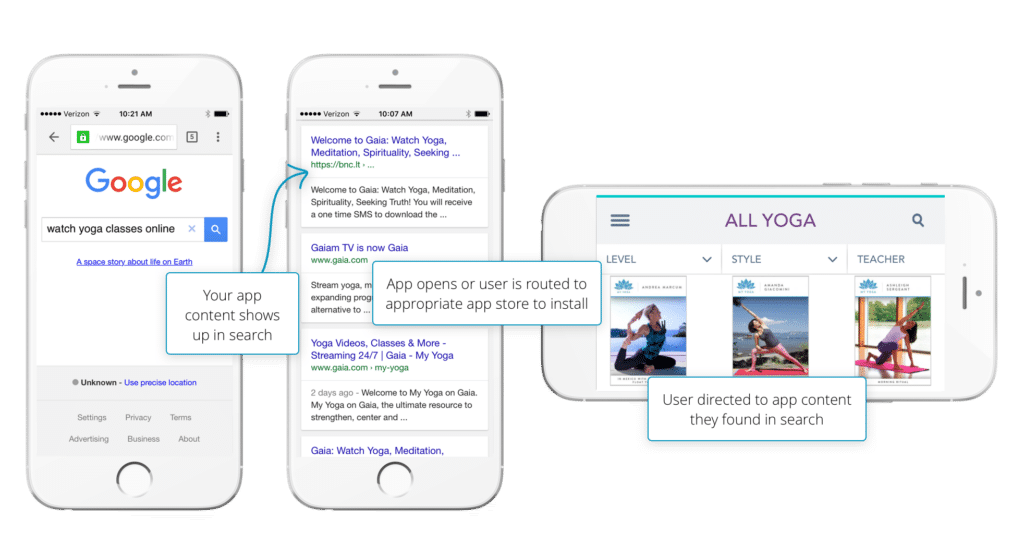
These deep linking strategies are instrumental to drive cross-platform user acquisition, and make your app stand out in an increasingly competitive mobile environment.
Ready to learn how Branch can jumpstart your cross-platform user acquisition efforts? Contact our sales team or sign up for the Branch dashboard to get started.






















